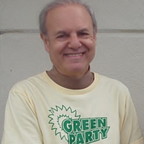The pandemic has shown the value of community in stark relief
It seems that the pandemic has motivated Naomi Klein (author of This Changes Everything) to recognize the advantages of living in cohousing:
https://overcast.fm/+dXFJh34jI
* * * *
My model of green lifeways is always the EcoVillage at Ithaca (EVI). I look forward to it eventually being built out per the original conception of five neighborhoods with about a hundred people in each (so: about 500 residents total). They could do that because they’re on 175 acres of land.
A real, full eco-community should be human-scaled yet populated enough so as to have a critical mass of people that can support on-site clubs, interest groups, professional services (resident doctors, for example), a school . . . multiple rock bands and theater troupes!
The division of a village community of 500 into neighborhoods is key. There’s interdependence within the village, but a degree of intimacy within the neighborhood. Think of what that means in regard to the COVID situation: Neighborhoods (not the whole ecovillage, that’s too many households, just each neighborhood) could proactively self-monitor so as to feel safe within a neighborhood bubble.
The current three neighborhoods at EVI (FROG, SONG, AND TREE) each have their own Common House. With the Common House within their bubble, they could self-coordinate a full-scale social life despite the pandemic, things like yoga sessions, music gatherings, book club discussions, etc. as well as continuing to share meals together.
* * * *
We need to make the case for the importance of a social circle one degree beyond the extended family. This is the circle that our current society so grievously lacks. It used to be that the vast majority of human beings lived in local, humanly-scaled communities. That social layer was undermined or obliterated by the relatively recent (last four centuries) modern dynamic toward hyper-urbanization and mass society.
The bubble of intimacy could encompass:
Person
Family
Extended family
Neighborhood
Circles beyond that … the domain of social/ecological responsibility and self-governance:
Village community
Municipality/township
Immediate region (like: county)
Extended bioregion
Altogether, this is a vision of sustainable human lifeways. It’s a basis for hope, a basis for having encouragement as we take incremental steps. If the concept is correct, then communitarian projects won’t be a fad or fashion, they’ll be enduring harbingers of a long-term movement for the greening of society.
This should be kept in mind as one such project after another gets inaugurated. Most won’t be able to purchase 175 acres, but rather, perhaps, a couple of contiguous houses on a city block or four or five acres in a township. Each project could be viewed as a seed. The fuller and fuller vision could be realized over time, maybe generations, as more land is purchased; or more nearby houses are bought up; or drawn in, as the model of a better way of living becomes recognized and appreciated.
The goal of the movement is to have eco-communitarian values permeate one particular place-on-earth after another. The pandemic has shown why.
